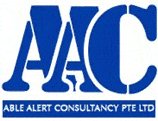25 May 2023
Speeches
OPENING ADDRESS BY
MR. SILAS SNG, COMMISSIONER FOR WSH,
OCCUPATIONAL SAFETY AND HEALTH DIVISION,
MINISTRY OF MANPOWER
WSH FORUM – HEAT STRESS MANAGEMENT
WEDNESDAY, 25 MAY 2023, 1400HRS
Shaw Foundation Alumni House Auditorium
11 Kent Ridge Dr, Singapore 119244
1. A very good afternoon to our distinguished speakers, ladies, and gentlemen. It is my pleasure to welcome all of you to the Workplace Safety and Health Forum on Heat Stress Management. I am very happy to hear that we have a very strong turnout today. As we are experiencing the hot season in Singapore, MOM and WSH Council have put this event together to inform the industry of the precautions to take and protect our workers.
2. As the Commissioner for Workplace Safety and Health, I am deeply concerned about the impact of heat stress on our workers. With climate change, heatwaves are becoming increasingly frequent and intense around the world.
3. The Straits Times reported on 20 April 2023 that a record-high heatwave has been scorching South and South-east Asia. Meteorologists have been tracking temperatures of as high as 45 degrees Celsius in India, Thailand, and Myanmar, and 42 to 43 degrees Celsius in Bangladesh, Laos, Vietnam, Nepal, and China. These are temperatures that most of these countries have not experienced in decades. This may be the start of a long dry spell that would likely be exacerbated by the El Nino weather phenomenon forecast to hit the region, including Singapore, later this year.
4. We know that working in Singapore’s hot and humid weather can put our workers at an increased risk of heat injuries, and it will only get hotter. The Centre for Climate Research Singapore has projected that with global warming, our daily average temperatures could increase by 1.4 to 4.6 degrees Celsius towards the end of the century. We need to take preventive measures to protect our workers, especially to acclimatise newly arrived workers from overseas or those who just started or are returning to outdoor work after a bout of illness or home leave, by gradually increasing the duration they spend working outdoors and monitoring them closely.
5. The International Labour Organisation (ILO) in its 2019 report on the “Impact of Heat Stress on Labour Productivity” rightly and bluntly stated that “Temperatures exceeding 39 C kills”. The main risk factors highlighted are high heat risk, poor compliance with guidelines and regulations as well as a lack of awareness in the workplace that heat stress can result in severe heat injuries, such as heat stroke, coma and even death.
6. To curb such harmful implications, a comprehensive and multifaceted approach to tackle Heat Stress at workplaces is pivotal. In December 2020, Ministry of Manpower and the Workplace Safety and Health (WSH) Council updated the WSH Guidelines on Managing Heat Stress in the Workplace, focusing on measures to prevent heat injuries.
7. I urge everyone to start preparing and put in place measures to protect your workers carrying out physical work activities outdoors by implementing various measures, such as providing drinking water facilities for workers to hydrate at least every hour; providing shaded rest areas and setting up shade for work areas wherever possible; that includes ventilating rest or work areas with fans or air coolers. As physical activity also generates heat within the body, workplaces have to make plans to reschedule strenuous work activities by avoiding the hotter hours of 11am to 3pm. To ensure that your workers are not exposed to high heat stress levels, measure wet bulb globe temperature (WBGT) at locations where physical outdoor work is carried out using a WBGT meter. Train supervisors and workers to recognise early heat stress symptoms and administer first aid.
8. You could use the heat stress compliance checklist that MOM and the Council has developed to ensure that your workplace has the various measures in place to reduce heat stress risks and protect your workers. This checklist will be available on WSH Council’s website.
9. The Ministry of Manpower will hold stakeholders responsible for implementing reasonably practicable measures to mitigate Heat Stress amongst workers. The measures that the workplace has implemented are required to be included in the risk assessment, as part of identifying heat stress hazards and reducing risks. Should a worker develop diseases caused by excessive heat at the workplace, employers are required to report the case to the Ministry of Manpower. Failure to comply with the legal provisions to protect workers from excessive heat can result in enforcement actions.
10. That said, the Ministry of Manpower is committed to working closely with employers, industry associations, and workers to promote best practices in heat stress management. We have developed guidelines and the compliance checklist to help employers identify and control the risks of heat stress. We will be releasing new Heat Stress collaterals such as posters and digital messages for dissemination after today’s session on Council’s website, and I encourage all of you to make use of these resources.
11. I urge all employers and workers in Singapore to take immediate steps to reduce heat stress risks, for a safe and healthy workplace environment. Heat stress is a serious issue that requires necessary proactive measures in workplaces. I urge everyone here to start preparing now if you have not done so. We can beat the heat together with effective strategies and control measures that will be shared by the various experts at today’s Forum. In addition, the government will also be implementing various measures to implement heat stress, so stay tuned for updates from the ministry and MSE.
12. For everyone present today, you play an important role to manage Heat Stress at workplaces. I hope you will gain much from the sharing by our experts and I wish you a fruitful and enlightening forum ahead.
